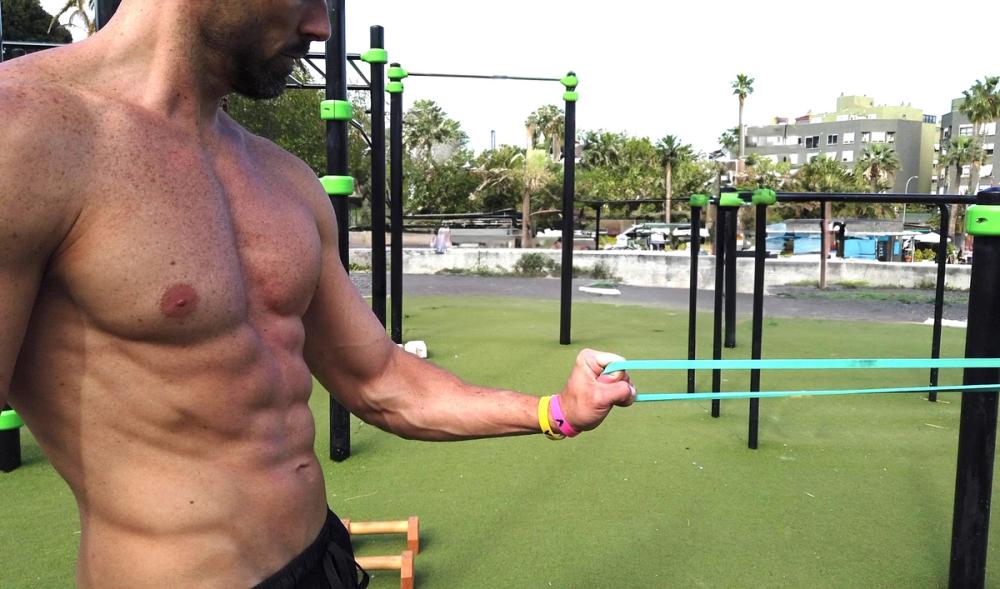
Calisteniapp 10' Workout Challenge
Start training or give your routines a boost with this 21-day Calisthenics challenge for all levels that will put your discipline to the test.

I have always been a supporter of the idea that there are no exercises that are inherently harmful, that it is something that depends on many factors, but there are cases that are so clear and have caused so much damage that it is difficult to deny the evidence.
You see, there is a concept in training to talk about whether an exercise is harmful or not that is summed up with the phrase “the dose is the poison.”
For example, deadlifts are often classified as harmful exercises, but if a moderately trained person were to do deadlifts with very light weight and with correct technique, say for example with 40 kilos (80 lbs), it would be almost impossible for them to get injured. Because their body can perfectly handle the load and no structure is compromised.

Injuries occur when you subject your body to an exercise with a load, whether external weight or your own body weight, that is not adequate for its capacity. Going back to the previous example, and going to an extreme case, if that same person suddenly tries to deadlift 300 kilos (600 lbs), they will probably end up injured.
Another well-known example is behind-the-neck pull-ups. If your neck and shoulders have adequate mobility and you are adapted to the exercise, it does not have to be harmful in itself. However, if you are not adapted, you have poor mobility and suddenly you start doing sets of 12 behind-the-neck pull-ups every day, it is likely that you will get injured. Another question would be why you would want to do this exercise, but we will leave that for future articles if you are interested.

The point of today's article is that there are cases of exercises that even with very low doses or in people who are very prepared, are very likely to cause injuries or even falls, as we will see below. So let's get to it:

In this case, it is not so much an exercise that is harmful due to a bad position of a joint or muscle or forced movements, but rather due to the danger of falling.
When you try to do a handstand, you must avoid bending your elbows too much, always keeping your head in a higher position than your hands.

What usually happens is that people who do not yet have enough strength, mainly in the shoulders but also in the triceps, pectorals and trapezius, cannot prevent their head from going down and staying at the height of their hands or lower, and that is when disaster strikes.
This position causes your center of gravity to suddenly shift towards your back and you cannot use your elbows or shoulders to control your balance, which makes the probability of falling on your back very high.

So, over the years I've been doing calisthenics, I've seen hundreds of falls of this type both in person and online. It's gotten to the point that when I see someone doing a handstand like this, I go straight to tell them to stop so they don't fall.
The solution to this problem is to be patient and not try to force yourself up into a handstand until you've better developed your shoulders and overall pushing strength. When you see that you can try without your head going down into the depths of the abyss, that's when you can safely train it directly.

This exercise, and some of its variations, has sent many calisthenics straight to the surgery room, some of them very well known. The result of this movement has been torn biceps in the worst cases, or partial tears in less severe cases.
Whether it's doing a simple back lever with a supinated grip, or doing a Hefesto to a supine back lever, or doing much more difficult variations, everything that has to do with this position in which the shoulders are extended, the elbows locked or semi-locked and the hands in an supine grip, is extremely dangerous.
As I mentioned at the beginning, there are people who are prepared for it, have built the necessary adaptations, and can do it without a problem. But what I have seen is that as soon as something goes wrong, as soon as they have a little accumulated fatigue, as soon as they haven't prepared well enough, as soon as there is some strange movement or any other factor, the risk of injury becomes very high.

That's why I sincerely believe that these variations are not worth it due to their risk-benefit distribution. I would only see it as a good thing for elite athletes who want to compete at the highest level. But for the rest of the people I don't recommend that they take that risk. And if you are going to take it on, prepare yourself very well, keep in mind all the factors that can affect it and be very careful.
At Calisteniapp we have the Hefesto program, in which the first phases are specifically designed to prepare your joints, strengthen and minimize the injury risk.

Most of us have experienced that our first muscle ups were a bit… questionable, to say the least. This is almost inevitable because by pure logic the first times you try a muscle up you are very short of strength to achieve it and both arms do not go up at the same time. But this does not mean that doing this movement is advisable or not dangerous.
From my experience, both in person and from what you have shared with me over the years, there is usually no problem if you try one or two muscle ups and they come out this way. The problem usually comes when you do the elbow destruction muscle up repeatedly and repeatedly.
For example, if instead of doing one or two to see how you are progressing, you do sets of many repetitions, or you try it many times for several days in a row. So, in this case the problem usually comes from treating this exercise as if it were just another one and there is nothing wrong with using it continuously.

What I recommend in this case is that if the muscle up comes out this way, you realize that it is not the technique you are looking for, take a step back, continue working on the progressions, the strengthening exercises and wait a reasonable amount of time, at least a couple of weeks, before trying again.
And when you finally get it right with the technique, you should also go very slowly but then you can start progressively adding more training volume for this exercise.
In Calisteniapp you have a large number of routines and a training program to get the muscle up that I think can be very helpful. You can download it from Google Play or Apple Store.
I hope the article is helpful, be very careful and enjoy your workouts,
Yerai Alonso

Yerai Alonso
Cofundador de Calisteniapp, referente en calistenia y el street workout en Español. Con más de una década de experiencia, es creador de uno de los canales de YouTube más influyentes del sector. Autor del libro La calle es tu gimnasio, campeón de Canarias y jurado en competiciones nacionales e internacionales.
Join our newsletter
Learn everything you need to know about calisthenics

Start training or give your routines a boost with this 21-day Calisthenics challenge for all levels that will put your discipline to the test.

Calisteniapp is a symbol that represents our obsession with excellence, our essence, and the path we want to define for the next ten years.

Descubre los mejores ejercicios de antebrazo para calistenia. Mejora fuerza, agarre y control corporal con entrenamientos efectivos sin pesas.
